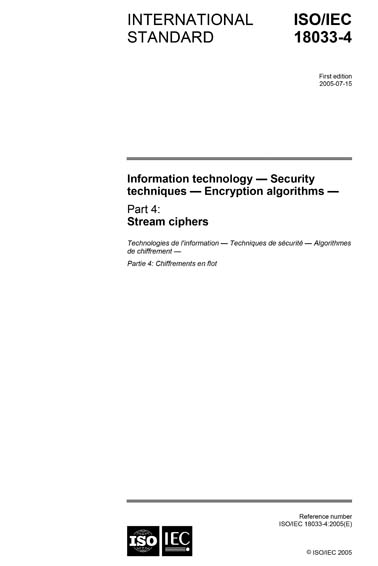Historical
ISO/IEC 18033-4:2005
Information technology - Security techniques - Encryption algorithms - Part 4: Stream ciphers
ISO/IEC 18033-4:2005 specifies stream cipher algorithms. A stream cipher is an encryption mechanism that uses a keystream to encrypt a plaintext in bitwise or block-wise manner. A stream cipher is technically specified by choosing a keystream generator and a mode of stream ciphers.
ISO/IEC 18033-4:2005 specifies the following ways to generate keystream.
- Mechanisms based on a block cipher: OFB, CTR, and CFB modes of block ciphers.
- Dedicated keystream generators: MUGI and SNOW 2.0.
ISO/IEC 18033-4:2005 specifies the following modes of stream ciphers:
- binary-additive output function,
- MULTI-S01 output function.
There are two types of stream cipher: a synchronous stream cipher, in which the keystream is only generated from the secret key (and an initialization vector) and a self-synchronizing stream cipher, in which the keystream is generated from the secret key and some past ciphertexts (and an initialization vector). Typically the encryption operation is the additive bitwise XOR operation between a keystream and the message. ISO/IEC 18033-4:2005 describes pseudorandom number generators for producing both keystream and output functions for stream ciphers.
Content Provider
International Organization for Standardization [iso]






